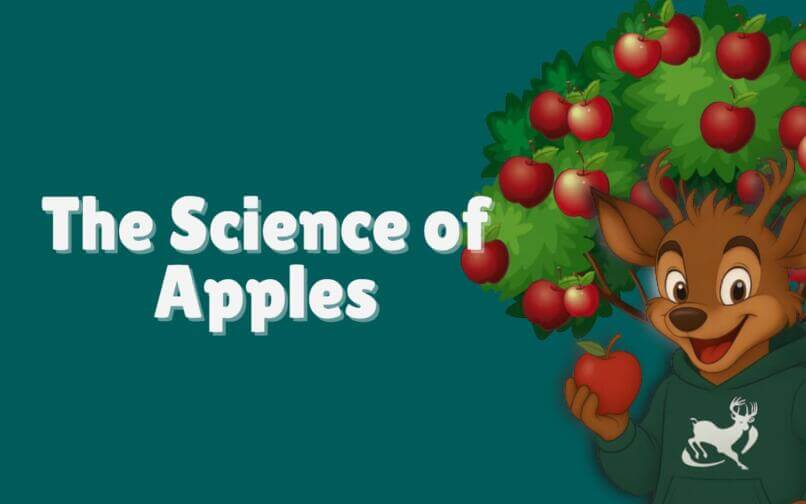The Science of Apples

Fall in Michigan wouldn’t be complete without crisp mornings, golden leaves, and—of course—apples. From cider mills to apple orchards, our state is famous for this fruit. But have you ever stopped to wonder why Michigan is one of the top apple-producing states in the country—or what’s really going on inside that shiny red snack? Let’s take a bite out of the science of apples!
Why Michigan Apples Are So Special
Michigan grows more than 16 different varieties of apples, from sweet Honeycrisp to tart Granny Smith. Our climate is the secret. The cool nights and warm days in September and October help apples ripen slowly, giving them their bold flavors and bright colors. Plus, the Great Lakes create the perfect environment for orchards, protecting the trees from frost and helping the soil stay fertile.
The Anatomy of an Apple
Every apple you eat is more than just a fruit—it’s a little science project!
Skin: The apple’s protective coat, full of antioxidants.
Flesh: The juicy inside, packed with water and natural sugars for energy.
Seeds: Each seed has the potential to grow into a brand-new apple tree (though it won’t be identical to the parent fruit—nature likes to mix things up).
Fun fact: Apples float in water because about 25% of their volume is air! That’s why bobbing for apples is such a classic fall game.
Why Apples Change Color
Ever notice how apples can be red, green, or yellow? That’s because of plant pigments:
Chlorophyll makes green apples green.
Carotenoids give golden apples their sunny glow.
Anthocyanins create those beautiful red shades.
The cooler the nights and the sunnier the days, the brighter the color. That’s Michigan fall weather at work!
An Apple a Day…
It’s not just a saying—apples are great for you. They’re full of fiber, vitamin C, and natural sugars that give your body energy without a crash. Eating the skin is extra healthy because that’s where many of the nutrients live.
Learning Outside the Virtual Classroom
At Michigan Virtual Charter Academy, we love connecting everyday experiences to what students are learning in school. Whether it’s the chemistry of apple pigments, the biology of how seeds grow, or the history of Michigan’s farming traditions, apples are the perfect reminder that science is everywhere.
So, the next time you bite into a crunchy apple or sip on a cup of warm cider, take a moment to appreciate the science behind it. You’re not just enjoying a fall favorite—you’re tasting the result of Michigan’s unique climate, agriculture, and a little bit of natural chemistry.
Back to Blog


